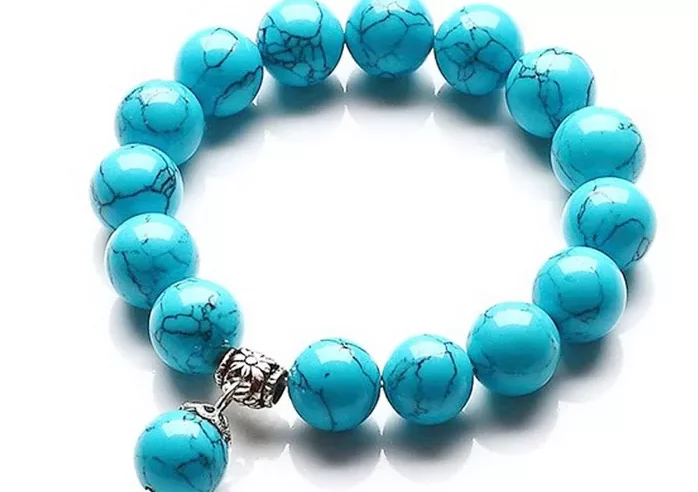Turquoise, with its captivating blend of blue and green hues reminiscent of serene waters, has captivated civilizations for millennia. Revered for its natural beauty and cultural significance, turquoise jewelry continues to enchant admirers around the globe. However, the allure of turquoise extends beyond its aesthetic appeal; it’s also a symbol of status, spirituality, and tradition. In this comprehensive exploration, we delve into the intricate world of turquoise jewelry, unraveling its pricing dynamics, quality indicators, and prevailing market trends.
Factors Affecting Turquoise Jewelry Price
When evaluating turquoise jewelry, pricing can vary significantly based on several key factors:
Quality of the Turquoise Stone: The quality of the turquoise stone serves as a primary determinant of its price. Factors such as clarity, hardness, and absence of imperfections contribute to its overall value. High-grade turquoise stones, characterized by intense color saturation and minimal matrix patterns, command premium prices in the market.
Color and Hue: Turquoise stones exhibit a spectrum of hues, ranging from delicate sky blues to vibrant greens. Generally, stones with deep, uniform colors are prized higher than those with paler or inconsistent tones. Exceptional clarity and intensity of color elevate the value of turquoise, reflecting its natural beauty and rarity.
Size and Weight: Larger turquoise stones are inherently more valuable due to their scarcity and potential for crafting statement pieces. While smaller stones are more abundant, their size still influences pricing, especially when paired with exceptional quality and color.
Craftsmanship: The skill and precision invested in crafting turquoise jewelry significantly impact its price. Intricate designs, meticulous detailing, and superior craftsmanship contribute to the overall allure and value of the piece.
Natural vs. Treated Turquoise: Authenticity plays a pivotal role in determining the value of turquoise jewelry. Natural turquoise, untouched by artificial treatments or enhancements, is highly coveted for its purity and intrinsic beauty. In contrast, treated or stabilized turquoise, subjected to processes like stabilization or dyeing to enhance its appearance or durability, tends to be more affordable but lacks the prestige associated with natural specimens.
Identify High-Quality Turquoise
Identifying high-quality turquoise is essential for discerning buyers seeking authenticity and value. Here are some key indicators to distinguish genuine turquoise from imitations:
Color Consistency: Authentic turquoise exhibits consistent color saturation throughout the stone, devoid of unnatural variations or abrupt color shifts. Beware of specimens with overly uniform coloration, as they may indicate artificial treatments.
Texture and Feel: Genuine turquoise possesses a distinct texture characterized by a smooth, waxy feel. Run your fingers across the surface to gauge its authenticity, avoiding stones with rough or granular textures, which may indicate synthetic materials or imitations.
Matrix Patterns: Natural turquoise often features intricate matrix patterns, such as veins, web-like lines, or speckles, formed by the presence of minerals like pyrite or quartz. These unique patterns add character and depth to the stone, enhancing its aesthetic appeal and value.
Reputable Sources: To ensure authenticity and quality, purchase turquoise jewelry from reputable sources, renowned for their commitment to ethical sourcing and craftsmanship. Established jewelers and certified dealers offer assurance of genuine products backed by industry standards and expertise.
Different Turquoise Colors
Turquoise comes in a diverse array of colors, each with its own distinct charm and allure:
Sky Blue: Delicate and serene, sky blue turquoise exudes a tranquil elegance, reminiscent of clear summer skies. While more common, high-quality specimens boast intense color saturation and minimal matrix patterns, elevating their desirability and value.
Greenish-Blue: Greenish-blue turquoise, with its verdant undertones, exudes a lush, earthy appeal reminiscent of lush forests and tranquil waters. Stones with vibrant green hues and intricate matrix patterns are prized for their rarity and visual impact.
Matrix Patterns: Matrix patterns, such as intricate veins, spiderweb-like lines, or speckles, add character and depth to turquoise stones. While some collectors prefer clean, matrix-free specimens, others cherish the unique beauty and authenticity of stones adorned with natural patterns.
Setting and Design: Elevating Turquoise through Artistry
The setting and design of turquoise jewelry play a pivotal role in enhancing its allure and value:
Metal Selection: Turquoise jewelry is often set in sterling silver, gold, or platinum, each imparting its unique aesthetic and style. Sterling silver settings are prized for their affordability and versatility, complementing the vibrant hues of turquoise with their cool, lustrous sheen. In contrast, gold settings exude luxury and opulence, adding warmth and richness to the ensemble.
Craftsmanship: Intricate designs, meticulous detailing, and superior craftsmanship elevate turquoise jewelry from mere accessories to wearable works of art. From elaborate filigree patterns to minimalist settings that let the stone’s natural beauty shine, the artistry invested in crafting turquoise jewelry defines its aesthetic appeal and value.
Market Trends of Turquoise jewelry
Turquoise jewelry is experiencing a resurgence in popularity, fueled by its timeless appeal and cultural significance:
Demand for Authenticity: With growing awareness of ethical sourcing and sustainability, consumers are gravitating towards authentic, responsibly sourced turquoise jewelry. As a result, demand for natural turquoise specimens, revered for their purity and authenticity, is on the rise.
Contemporary Designs: Modern artisans are reimagining turquoise jewelry with innovative designs that blend traditional craftsmanship with contemporary aesthetics. From sleek, minimalist pieces to bold, statement designs, turquoise jewelry caters to diverse tastes and preferences, appealing to fashion-forward consumers seeking distinctive, one-of-a-kind accessories.
Cultural and Historical Significance: Turquoise holds deep cultural and historical significance across civilizations, symbolizing protection, prosperity, and spiritual enlightenment. From ancient Egyptian amulets to Native American ceremonial adornments, turquoise jewelry embodies centuries of tradition and heritage, adding an aura of mystique and reverence to each piece.
Conclusion
Turquoise jewelry transcends mere adornment, embodying a rich tapestry of culture, history, and tradition. As a symbol of beauty, authenticity, and spirituality, turquoise continues to captivate hearts and minds, enchanting admirers with its timeless allure and enduring appeal. Whether cherished for its vibrant colors, intricate matrix patterns, or cultural significance, turquoise jewelry stands as a testament to the enduring legacy of one of nature’s most cherished treasures.


